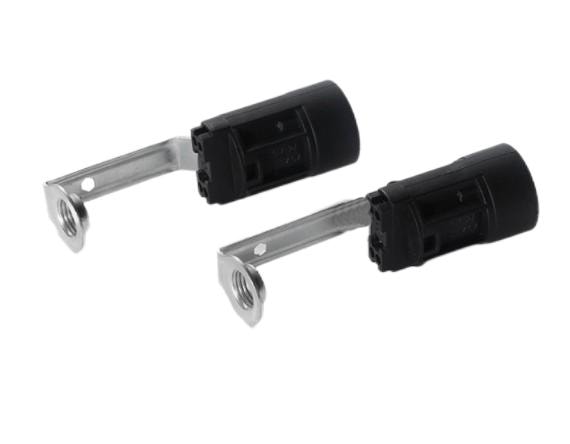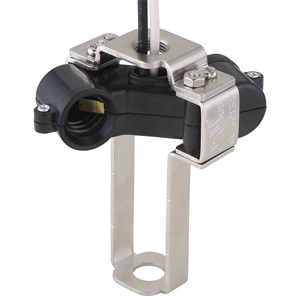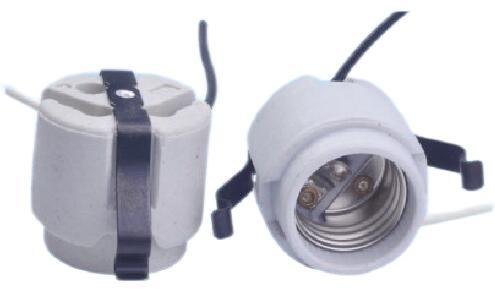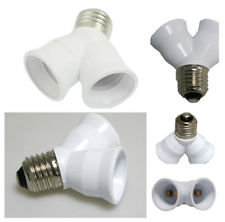When shopping for lightbulbs, you may encounter terms like “candelabra base” and wonder what they mean. Candelabra-base LED lightbulbs are popular choices for decorative lighting, but their specific purpose and advantages might not be immediately clear. This article will explain what these bulbs are, where they’re used, and why they are a great choice for many lighting applications.

What is a Candelabra-Base Lightbulb?
A candelabra-base lightbulb refers to a bulb with a smaller screw base size, typically classified as E12 in the Edison Screw (ES) system. The “E” stands for Edison, and the “12” represents the base diameter in millimeters. These bulbs are much smaller than standard screw-base bulbs like E26 or E27. Candelabra-base bulbs are most often used in decorative lighting fixtures such as chandeliers, wall sconces, pendant lights, and ceiling fans. Their smaller size allows them to blend seamlessly into intricate lighting designs while providing the necessary brightness and aesthetic appeal.
How Does a Candelabra-Base LED Lightbulb Differ from Other LED Bulbs?
Candelabra-base LED lightbulbs share many characteristics with standard LED bulbs, including energy efficiency, long lifespan, and versatile lighting options. However, their smaller base size and design make them unique. Unlike the larger E26 or E27 bases commonly found in household lighting, E12 bulbs are specifically designed for smaller fixtures. LED technology enhances the functionality of candelabra-base bulbs by offering bright, efficient lighting in a compact form factor. This combination of size and efficiency makes them ideal for use in fixtures where traditional incandescent or halogen bulbs would overheat or consume excessive energy.
Applications of Candelabra-Base LED Lightbulbs
Candelabra-base LED lightbulbs are often used in decorative lighting applications. They are ideal for chandeliers, where their small size and elegant shapes, such as flame-tip or torpedo designs, complement the fixture’s aesthetic. These bulbs are also popular in wall sconces, accent lighting, and ceiling fans. In residential settings, they add charm and warmth to dining rooms, living areas, and entryways. In commercial spaces, they enhance the ambiance of restaurants, hotels, and retail stores. Candelabra bulbs are also used in nightlights and other small fixtures, making them versatile across various environments.

Benefits of Using Candelabra-Base LED Lightbulbs
One of the most significant advantages of candelabra-base LED bulbs is their energy efficiency. LEDs consume significantly less power than incandescent or halogen bulbs, resulting in lower electricity bills. They also have a much longer lifespan, often lasting 15,000 to 25,000 hours or more, compared to the short lifespans of traditional bulbs. LEDs offer instant full brightness without any warm-up time and are available in a variety of color temperatures, from warm white to cool daylight. Many candelabra-base LED bulbs are dimmable, providing flexibility in creating the desired ambiance. Additionally, their lower energy consumption and lack of harmful materials, like mercury, make them an environmentally friendly choice.
Considerations When Choosing a Candelabra-Base LED Bulb
When selecting a candelabra-base LED bulb, several factors should be considered to ensure the best performance and compatibility. First, choose the appropriate wattage equivalent for your fixture to match the brightness of traditional bulbs. Pay attention to color temperature, with warmer tones (2700K–3000K) ideal for cozy spaces and cooler tones (4000K–5000K) better for task lighting. If you need dimmable bulbs, check compatibility with your existing dimmer switches. Consider the bulb’s shape and design—flame-tip, torpedo, or globe styles—to match the aesthetic of your fixture. For international applications, verify the bulb’s voltage rating to ensure compatibility with local electrical systems.
How to Install Candelabra-Base LED Lightbulbs Safely
Installing candelabra-base LED bulbs is a straightforward process, but a few precautions should be taken to ensure safety. Begin by turning off the power to the fixture to avoid electrical shocks. Remove the old bulb carefully, especially if it is fragile or broken. Insert the LED bulb into the socket and twist it gently until it is secure. Avoid overtightening, as this could damage the bulb or the socket. If the bulb is being used in an enclosed fixture, ensure it is rated for enclosed spaces to prevent overheating. Always handle bulbs with clean, dry hands to avoid transferring oils or moisture.

Common Problems with Candelabra-Base LED Lightbulbs
While candelabra-base LED bulbs are reliable, they can sometimes experience issues like flickering or buzzing sounds. These problems are often caused by incompatible dimmer switches or fluctuations in the power supply. Overheating may occur if the bulb is not rated for enclosed fixtures or if the fixture’s heat dissipation is inadequate. Additionally, some users may find that the light output is insufficient for their needs, particularly if the wattage equivalent is too low. Troubleshooting these issues often involves checking compatibility and ensuring proper installation.
Candelabra-Base LED vs. Incandescent or Halogen Bulbs
Compared to incandescent and halogen bulbs, candelabra-base LED bulbs offer superior energy efficiency and longevity. Although LED bulbs have a higher upfront cost, they provide significant savings over time through reduced electricity consumption and fewer replacements. LEDs are also more environmentally friendly, as they generate less heat and contain no hazardous materials. In decorative fixtures, LEDs maintain their aesthetic appeal while providing consistent, high-quality light that enhances the overall design of the space.
Conclusion
Candelabra-base LED lightbulbs combine the elegance of traditional decorative bulbs with the efficiency and performance of modern LED technology. Their small size and versatility make them ideal for a wide range of applications, from chandeliers to nightlights. By choosing LED candelabra bulbs, you can enjoy energy savings, a longer bulb lifespan, and a variety of lighting options to suit your needs. Whether for residential or commercial use, these bulbs are an excellent choice for enhancing the ambiance and functionality of your space.

FAQs
Can I replace my candelabra incandescent bulbs with LED bulbs? Yes, as long as the LED bulb has the same E12 base and wattage equivalent. Check compatibility with your fixture.
Are candelabra-base LED bulbs dimmable? Many are, but ensure that the bulb and your dimmer switch are compatible.
What is the typical lifespan of a candelabra-base LED bulb? Most LED bulbs last 15,000 to 25,000 hours or more, significantly longer than traditional bulbs.
Are there any special considerations when installing candelabra-base bulbs in outdoor lighting? Choose bulbs rated for outdoor use and ensure they are protected from extreme weather conditions.














